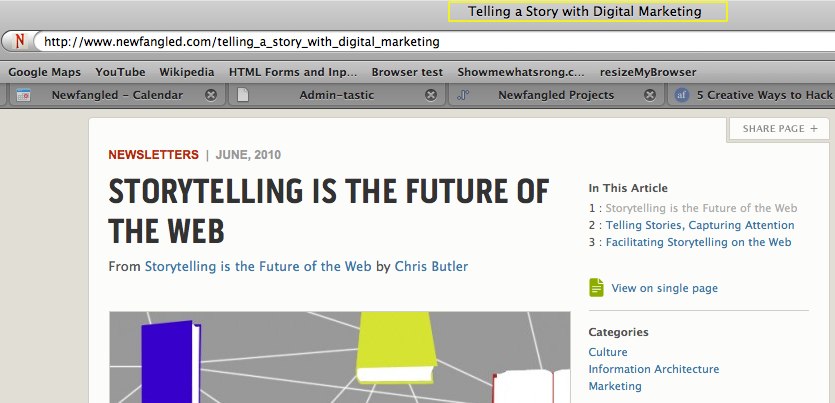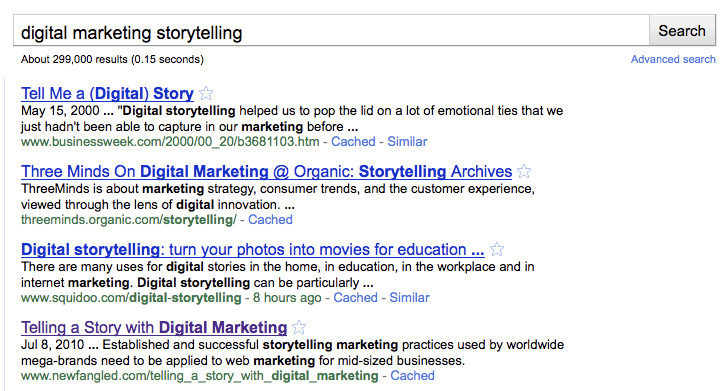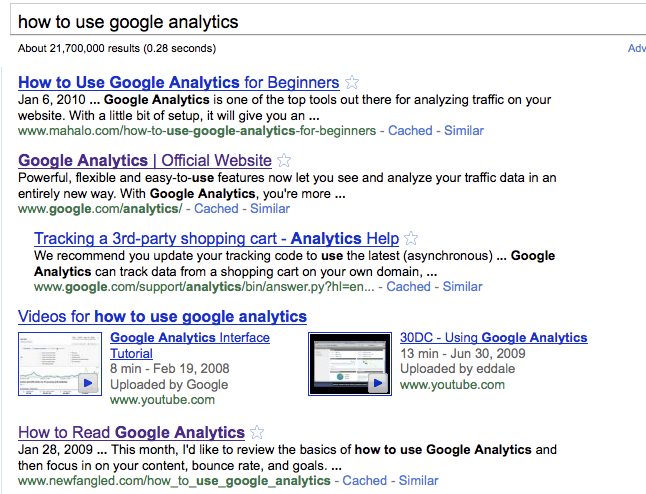A question we hear from clients quite often here at Newfangled is “How do I get my site to rank higher with Google?” And this is a topic that Newfangled has documented in depth on our site – to the point where it could be overwhelming.
If you do a site search at newfangled.com for “SEO” or “Search Engine Optimization,” you are likely to find roughly 125 results. Each blog post, newsletter, webinar or video focuses on a different aspect of search and specific things you can do to increase your rankings.
What I have found is that, sometimes, this information can become overwhelming. Let’s be honest – you don’t have the time to research all of these different methods, much less the time to make all of these changes on each and every page of your site, but you definitely don’t want to spend the money to have an “expert” do it all for you.
Thus, I have compiled a brief list of the key points of basic SEO that, if implemented properly, will help your site move up in the rankings without any huge time commitments from you or your staff.
First, I would like to thank Mark for his webinar yesterday. If you missed it, you can download it here. Mark touches on all of the points I am about to cover as a part of his webinar on website development for designers. SEO is just a minor point in a much broader, well presented topic.
STEP ONE: Meta Titles
Whenever you create a page on your website, you should give it a meta title. But not just any meta title! You have to get inside the mind of your target market. Think: “What would I type into Google if I were looking for this product/service/information?” Often, the answer to this question should be your meta title.
Sure, you can use creative titles in the body of the page, but your meta title, which appears at the very top of your browser, should be targeted towards search. Why is this? Simple – because this is the first thing that Google will look for when trying to figure out what your site is about.
For example, Chris Butler’s latest newsletter is called “Storytelling is the Future of the Web,” but would you ever type that into your Google search? No, probably not. However, the meta title of Chris’ newsletter is “Telling a story with digital marketing.” Now this sounds much more search-friendly. Anyone interested in digital marketing and using storytelling to market online could come across this page.

Let’s test it out. Say I search for “digital marketing storytelling.” This newsletter shows up as the fourth listing. Not too bad for a few very competitive keywords. The site is the number one listing if I use the meta title “Telling a story with digital marketing” exactly.


STEP TWO: Friendly URLs
After looking to see the title of your page, the next place Google will look to figure out what your page is about is the actual URL. Sure, all of your pages are www.yourcompany.com, but what comes after that is often overlooked and is of huge importance to search engines.
Often, this can be the same as the title, but it doesn’t have to be. For example, another newsletter article that Chris wrote about Google Analytics has a meta title of “How to read google analytics” (a great example of thinking like the user) and a URL of “https://www.newfangled.com/how_to_use_google_analytics” The only difference being that one says “use” and the other says “read.” Obviously, people could be searching for either, so by doing this, Chris has covered all of his bases while reinforcing the fact that this page is a How-to guide on google analytics.
If we search for the meta title “how to read google analytics,” the page shows up ninth overall, and if we search “how to use google analytics” it shows up 4th (behind two of Google’s own sites, including www.google.com/analytics!).
Again, these pages have achieved high rankings despite the competitive nature of these keywords.

STEP THREE: h1 Tags
H1 tags are simply the HTML for the main heading of a page. This is typically the title you see displayed on the page, letting you know what you are reading. Because of this, Google also checks out these tags to see what the page is about.
No matter what your page is about or what is on it, make sure you are using h1 tags not only to let the user know what they will find on the page, but also to help Google make decisions about your page.
BIG PICTURE: Content
The three things listed above are simple ways to help google index your site and rank you higher, however, the best way to keep Google coming back to your site, and to keep moving up in the rankings is by continually creating new content.
Whether it is adding a monthly newsletter or blogging periodically, getting up fresh content is one of the best ways to help your SEO.
I know what you’re saying, “but that takes TIME! And you said these were going to be easy fixes!” It is true, these things do take time, but adding content can also be done by your users. Allow users to post product reviews or leave comments on certain pages. Try setting up a forum where users can interact. This is new, fresh content that will hopefully be relevant to the page and will thus increase your search rankings, and it doesn’t require you to sit down and write articles.
One last point, while we’re talking about users. Allow users to share your site. put up a widget so that they can share your site on Facebook, Twitter, or LinkedIn. The more places on the web that refer back to your site, the more Google will see you as an authority on the topic and increase your ranking. And the best part is that it is done by the users. As long as you are giving them a reason to share/like your content, then you can just sit back and watch your page climb up the rankings ladder.
I hope none of this was too confusing and will be a useful guide as you begin into the world of SEO. Sure, there is a lot that I did not cover, and there is much more that can be done. If you do everything in this article, you won’t move up to number one for all of your keywords overnight. You must continue to develop content that utilizes all of the items above over time. The more content you produce using these tips, the more likely you are to move up.


